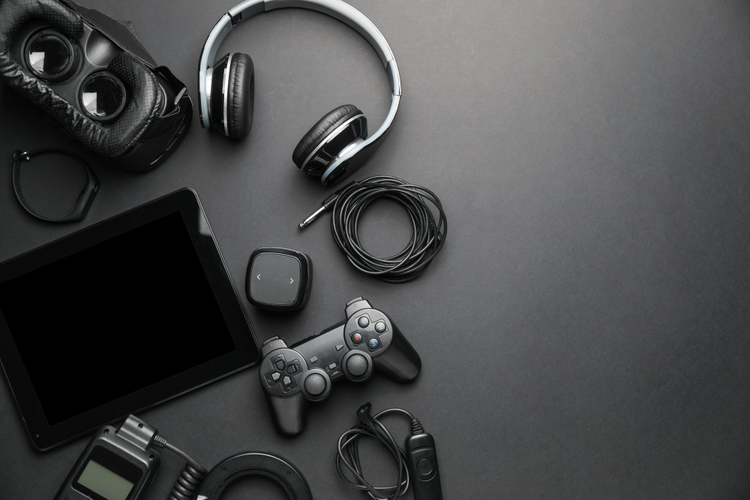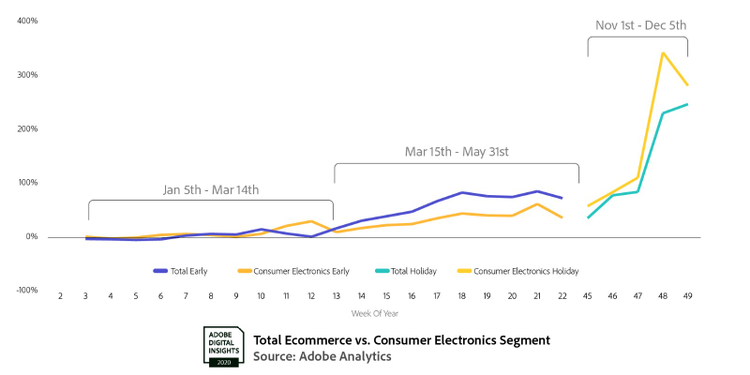2020 digital economy index | a closer look at consumer electronics
After analyzing the digital economic landscape, we’ve found that electronics is one of three categories that has a heavy influence on the online economy trends.

After analyzing the digital economic landscape, we have found that electronics is one of three categories (along with grocery and apparel) that has a heavy influence on the online economy trends. We are excited to share powerful data insights to help you understand and act on digital trends in consumer electronics. Let us take a closer look at this segment — the online shopping trends, price changes, and consumer technologies adoption.
Online shopping trends
There has been steady growth in the consumer electronics segment since the beginning of the COVID-19 pandemic due to consumers’ shift to online shopping, but the growth was not as strong, compared to the rest of B2C ecommerce. Things changed around Black Friday and Cyber Monday — holiday shopping events drove an increased demand for electronics. During the holiday season CE retailers outpaced the overall growth in the first part of the season — check out the graph below for the details.
While one in five consumers upgraded their home office in 2020, and one in three upgraded their distance learning environment, privacy remains to be a significant concern. Baby Boomers tend to be the most concerned, and Gen Z — the least concerned.

Price change for electronics
Electronics prices are now beginning to plateau, after years of innovation-fueled price reduction. The absorption of offline purchasing into the online electronics category and COVID associated demand have been key culprits. There has been a 44 percent drop in online prices for electronics between the years 2014 and 2020.
Price (74 percent) is one of top three buying criteria of electronic devices, preceded by quality (82 percent) and ease of use (77 percent). Learn about the consumer decision-making process by examining the rank of each buying criteria in the full report.
Penetration of consumer technologies
Consumers picked up more electronic devices in 2020. When we asked consumers what devices they own, almost every trending product saw an increase. To illustrate, 31 percent of participants owned a smart speaker in 2020 (26 percent in 2019), 66 percent owned a laptop (62 percent in 2019), and 16 percent owned a car with voice assistant (12 percent in 2019).
Virtual Reality (VR) technology still is not reaching the masses, with only 1 out of 4 consumers having tried VR. 1 out of 3 consumers have purchased a voice-controlled device in the past year, with Millennials and Gen Z leading the charge.
These insights come from analyzing more than 1 trillion visits to U.S. based retail websites, as well as sales of more than 100 million unique products and a survey of 1,000 US consumers. If you would like to learn more insights about consumer electronics that will empower you to leverage the latest trends, read the full 2020 Digital Economy Index report.